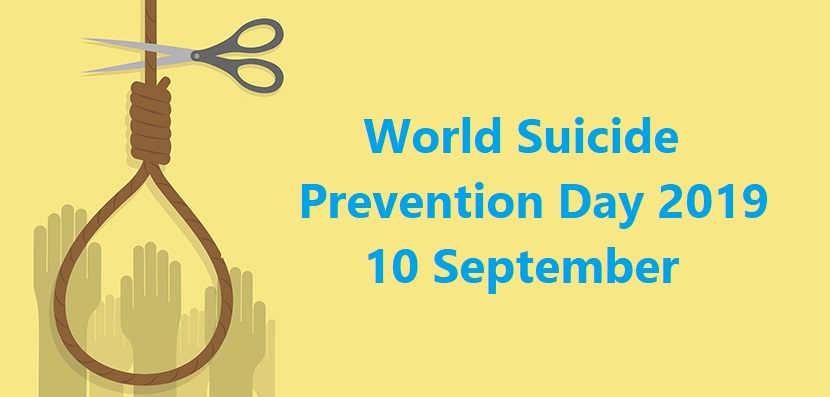World Suicide Prevention Day
World Suicide Prevention Day 2019 Facts and Figures Sheet

Over 800,000 people die by suicide annually, representing 1 person every 40
seconds
• Suicide is the 15th leading cause of death globally, account for 1.4% of all deaths
• The global suicide rate is 11.4 per 100 000 population
• 15.0/100 000 for males
• 8.0/100 000 for females
• Suicide is the leading cause of death in people aged 15-24 in many European
countries
• Globally suicide rates among this age group are higher in males than females
• Self-harm largely occurs among older adolescents, and globally is the 2nd leading
cause of death for older adolescent girls
• In 2012, 76% of global suicide occurred in low- and middle-income countries
39% of which occurred in the South-East Asia Region
• In 25 countries (within WHO member states) suicide is currently still criminalized
• In an additional 20 countries suicide attempters may be punished with jail
sentences, according to Sharia law
• Suicide is the result of a convergence of risk factors including but not limited to
genetic, psychological, social and cultural risk factors, sometimes combined with
experiences of trauma and loss
• Depression is the most common psychiatric disorder in people who die by suicide
• 50% of individuals in high income countries who die by suicide have major
depressive disorder at their time of death
• For every 1 suicide 25 people make a suicide attempt
• 135 people are affected by each suicide death
• This equates to 108 million people bereaved by suicide worldwide every year
• Relatives and close friends of people who die by suicide are a high-risk group for
suicide, due to the psychological trauma of a suicide loss and potential shared
familial and environmental risk, auicide contagion through the process of social
modelling, and the burden of stigma associated with this loss
• Effective suicide prevention strategies need to incorporate public health policy
strategies and healthcare strategies, incorporating measure with the strongest
evidence of efficacy such as: restriction of access to lethal means; treatment of
depression; ensuring chain of care; and school-based universal prevention

